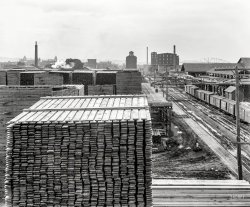
MAY CONTAIN NUTS

Search Shorpy
SHORPY ART

Framed or unframed, desk size to sofa size, printed by us in Arizona and Alabama since 2007. Explore now.
Join and Share
Ad-Free Shorpy
Shorpy is funded by you. Patreon contributors get an ad-free experience.
Learn more.

Recent comments
- Ticket Retention
- Killed by Amtrak
- Back to the Future
- Heckuva remote control!
- Sometimes — Things Go Bump!
- I SEE THE LIGHT
- Union Switch and Signal Company
- Get That Light Out Of My Eyes
- Eggs. Eggs. Eggs. The Egg Man is Here!
- Foreboding caption
- Famous Hollywood faces
- Not just S&P
- re: Those things in the jar
- Up In Smoke
- Medical Smoking
- Quick fix
- A Quink Comment
- If You’re Like Me, Never
- Delivering the News
- U.S.A.
- S&P
- 1940 Zenith radio model 6G601
- Quality goes in before the name goes on!
- Snazzy skirt
- Carbon Arc Lamps
- Illuminate us
- I remember it well
- I can't prove it
- Complicated then, forgotten now
- Bryan-Stevenson
Member Photos
The Shorpy
Print Emporium
Print Emporium
Search Shorpy
Search results -- 30 results per page
- Lots of Pulp: 1908
- Circa 1908. "Paper mills at Petoskey, Michigan." 8x10 inch dry plate glass negative, Detroit Publishing Company. ... Posted by Dave - 07/29/2012 - 6:13pm -
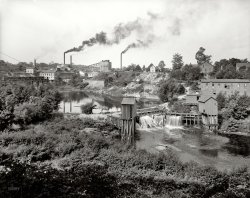
- Newly Wet: 1905
- Ecorse, Michigan, 1905. "S.S. William G. Mather , stern view after the launch." 8x10 ... Posted by Dave - 06/05/2016 - 8:57pm -
![Newly Wet: 1905 Ecorse, Michigan, 1905. "S.S. William G. Mather, stern view after the launch." 8x10 inch dry plate glass negative, Detroit Publishing Company. View full size.
1905I see in the information provided by tterrace that they changed the name of this earlier William G. Mather in 1925. I'm guessing that is because of the newer Mather which was built in 1925, also by Great Lakes Engineering Works, and now sits on the the lakefront in Cleveland.
1905 or 1925?Wikipedia and other internet sources say the vessel was launched in 1925. Sources include the Great Lakes Science Centre and the American Society of Mechanical Engineers.
[Except for sources relevant to the vessel pictured which, as the caption states, was launched in 1905. -tterrace]
Man overboard?I can't quite make out what is happening, but it looks perilous!
Confused? Yes, that's my middle nameIt seems there is some confusion on which vessel is which. The Historical Collection of the Great Lakes states the vessel, registry #202542, was scrapped in 1996. Seems the William G Mather is still at the E 9th St pier. If you read the historical text, the William G Mather was 'standing by' when the Nicolet (then named) was squeezed by ice in 1972, suffering 55 cracked plates.
[The second William G. Mather (224850) was launched in 1925 and is now used as a marine museum in Cleveland, Ohio. Our ship went through a series of name changes starting in 1925 and was sold for scrap in 1996. -tterrace]
Graceful LinesHow different the lines of this ship are from the lines of a modern steel ship ! Note the graceful curved counter stern, totally unlike the flat transoms seen on most of today's ships.
Many of this ship's plates are curved in two dimensions, which requires actual heating and stretching of the steel as opposed to merely rolling the plates into conic sections.
Note also that she's riveted, rather than welded.
Modern ships may be cheaper to build, but they tend to be blocky and not pleasing to the eye.
The propeller has some bolts at the base of each blade, suggesting that it is either a changeable-pitch propeller (unlikely) or perhaps a propeller built up from several castings.
I'm also struck by the many wooden fragments, blocks, and timbers from the launching cradle which are floating uncontained in the lake. Today, all this would have to be strictly contained and thoroughly cleaned up !
(The Gallery, Boats & Bridges, DPC)](https://www.shorpy.com/files/images/SHORPY-4a15781a.thumbnail.jpg)
- Leafy Enclave: 1906
- 1906. "Cottages at Harbor Springs, Michigan." The resort community in its early years. 8x10 inch glass negative, ... years ago, I was a guest for a week at a cottage on Lake Michigan. It was like these, 6 bedrooms, large kitchen and dining room and ... Posted by Dave - 09/04/2014 - 10:49am -
![Leafy Enclave: 1906 1906. "Cottages at Harbor Springs, Michigan." The resort community in its early years. 8x10 inch glass negative, Detroit Publishing Company. View full size.
Look mighty big to be cottages.More like bed and breakfasts. Looks like a very pleasant place to be in a pleasant time.
[You've never been to Newport. - Dave]
"Cottages"I always assumed cottages to be small simple houses, typically near a lake or beach. Several years ago, I was a guest for a week at a cottage on Lake Michigan. It was like these, 6 bedrooms, large kitchen and dining room and great room. Built about 1903. However, the bathrooms were rather skimpy.
(The Gallery, DPC)](https://www.shorpy.com/files/images/SHORPY-4a13046a.thumbnail.jpg)
- William G. Mather: 1905
- October 1905. Ecorse, Michigan. "S.S. William G. Mather -- stern view before launch." Our second ... Posted by Dave - 06/28/2013 - 8:58pm -
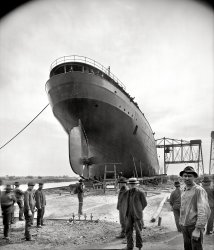
- Lake Front Depot: 1899
- ... Railway Station." Romanesque Revival structure on Lake Michigan completed in 1890; demolished 1968. 8x10 inch dry plate glass ... Posted by Dave - 03/15/2018 - 6:59pm -
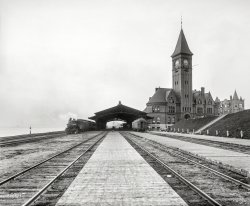
- Tashmoo at Port: 1906
- Circa 1906. "The Tashmoo at Port Huron, Michigan." Our seventh post featuring the celebrated sidewheeler. Note the bike ... Posted by Dave - 08/13/2013 - 3:44pm -
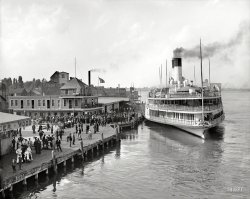
- Day Job: 1941
- ... the day he works on the new home which he is building. Detroit, Michigan." Acetate negative by John Vachon. View full size.
... Posted by Dave - 03/19/2020 - 12:01pm -
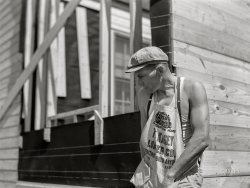
- Here Comes Carbon: 1910
- ... in 1964. On October 29, 1965, both scows broke tow on Lake Michigan. Bow section struck Frankfort, Mich., breakwater and sank; stern ... Posted by Dave - 11/30/2012 - 7:58am -
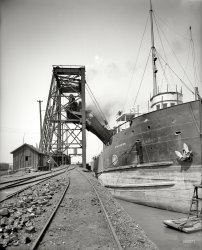
- Tulsa: 1921
- ... the term, riot, is misleading. I am 62 and grew up in the Detroit, Michigan area. I was 61 when I learned about the Tulsa massacre. Thank you, ... Posted by Dave - 06/20/2020 - 11:14am -
![Tulsa: 1921 "Disaster Relief. Interior, American Red Cross hospital, Tulsa, Oklahoma. Nov. 1, 1921. Patients recovering from effects of race riot of June 1, 1921." 5x7 inch glass negative, American National Red Cross photograph collection, Library of Congress. View full size.
Indeed a massacreAgree that the term, riot, is misleading. I am 62 and grew up in the Detroit, Michigan area. I was 61 when I learned about the Tulsa massacre. Thank you, Dave.
Just two words, three, actuallyThank you, Dave.
MassacreThe term "riot" is misleading.
I didn't learn about this event until I was over 40 years old. This history has been suppressed, and will be no longer.
Five months laterThe patients pictured were still being treated five months after the riot/massacre.
[November 1 is the date the caption was written. Unclear if that's when the photos was taken. - Dave]
HeartbreakingThis photo brings tears to my eyes -- the patients look shell-shocked, as they should, since everything and so many loved ones were decimated.
(The Gallery, ANRC, Medicine)](https://www.shorpy.com/files/images/SHORPY-14753a.thumbnail.jpg)
- Meet Mrs. Ash: 1941
- ... new home which they are building themselves. Outskirts of Detroit, Michigan." Medium format acetate negative by John Vachon for the Farm Security ... Posted by Dave - 03/05/2020 - 1:50pm -
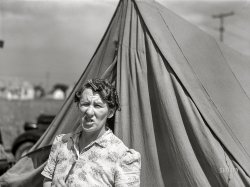
- Grand Rapids: 1908
- Grand Rapids, Michigan, circa 1908. "Canal Street from corner of Monroe." Merchants vying for ... Posted by Dave - 05/17/2014 - 11:34pm -
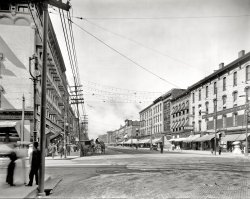
- Bois de Bourgeois: 1906
- Detroit, Michigan, circa 1906. "Residences on Jefferson Avenue." 8x10 inch dry plate ... Posted by Dave - 02/27/2018 - 12:11pm -
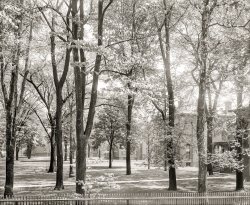
- Open for Business: 1908
- Circa 1908. "Ashmun Street, Sault Sainte Marie, Michigan." A bustling business district whose transport options include auto, ... Posted by Dave - 05/29/2015 - 9:02am -
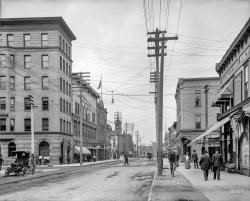
- Cheersh: 1941
- ... on Sunday afternoon. Finnish community of Bruce Crossing, Michigan." Medium format acetate negative by John Vachon. View full size. ... Posted by Dave - 02/29/2020 - 5:46pm -
![Cheersh: 1941 August 1941. "Farm boys in beer parlor on Sunday afternoon. Finnish community of Bruce Crossing, Michigan." Medium format acetate negative by John Vachon. View full size.
Bottle Can GlassTo me it always seemed that pouring from a bottle or can into a glass allowed the brew to breathe a little, thus taming the carbonation and improving taste. After the third one though, who cares.
Royal Bohemian BeerLooks like they are enjoying Royal Bohemian from the Duluth Brewing & Malting Company.
Sisu, eh?All communities thereabouts are Finnish communities. Pritnear every Yooper is at least part Finn.
GlassesFind out that they use glasses to drink beer. I'm not American and I find that in every American film people drink beer directly from bottles. Is it now normal as it was normal to use glasses in forties?
[In my experience, most bottle beer in restaurants and bars here in America is poured into glasses or mugs. - Dave]
Natty BohThe boys are enjoying some National Bohemian Pilsner. A bit surprising, since Bruce Crossing is in the UP, and Natty Boh was brewed in Baltimore. I would have thought Milwaukee or Detroit suds would have been the beer of choice.
[The beer is Minnesotan -- Royal Bohemian from Duluth. - Dave]
(The Gallery, Eateries & Bars, John Vachon)](https://www.shorpy.com/files/images/SHORPY-8c19965a.thumbnail.jpg)
- The Writing Room: 1905
- Alma, Michigan, circa 1905. "Alma Sanitarium, gentlemen's writing room." 8x10 inch ... Posted by Dave - 03/15/2014 - 11:34pm -
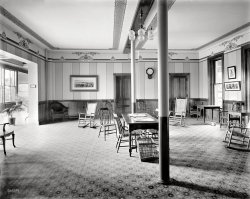
- From Scratch: 1901
- Chelsea, Michigan, circa 1901. "Glazier Stove Company. Moulding room." By the time we're ... Posted by Dave - 10/20/2012 - 10:52am -
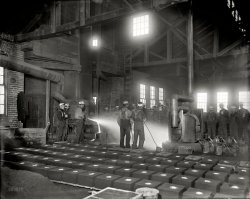
- Stoves to Go: 1901
- Chelsea, Michigan, circa 1901. "Glazier Stove Company tramway." Much as the swallows ... Posted by Dave - 10/20/2012 - 10:53am -
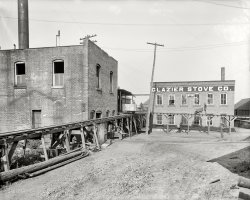
- That Light in the Tunnel: 1900
- Circa 1900. "St. Clair River tunnel. Port Huron, Michigan." Time to move the camera! 8x10 inch glass negative, Detroit ... Posted by Dave - 01/05/2015 - 12:32pm -
![That Light in the Tunnel: 1900 Circa 1900. "St. Clair River tunnel. Port Huron, Michigan." Time to move the camera! 8x10 inch glass negative, Detroit Publishing Co. View full size.
ProhibitionThe sign was written by the Canadian side, "public" taking a Canadian plural verb rather than the American singular.
[Just to be utterly clear, however, the photo was taken from the U.S. side. The new tunnel was built in 1994 to the north of the original. -tterrace]
0-10-0This is a pre-electrification view. St. Clair Tunnel Co. #1304 was an 0-10-0 steam locomotive. In 1907, catenary was hung in the tunnel and electric locomotives were used until dieselization in the late 1950s.
Prohibited" ... blah blah blah, thereto."
Regarding The Plural PublicThe original owner, Grand Trunk Railway (predecessor to Grand Trunk and Western), was Canadian company.
St Clair Tunnel Company steam locoIn the photo the engine is running tender first. They weren't turned, hence the position of the cab.
(The Gallery, DPC, Railroads)](https://www.shorpy.com/files/images/SHORPY-4a08706a.thumbnail.jpg)
- One Era Ends, One Begins: 1960
- ... for being the last steam engine to run in Port Huron, Michigan as well as pulling the last steam train there. 6327 was among the last ... Posted by beal99 - 03/07/2011 - 10:22am -
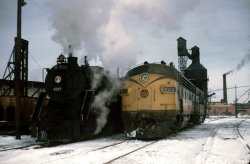
- Bancroft House: 1907
- ... miles away to see it.
2. First incandescent bulb in Michigan lit the Bancroft Hotel. [ Link ]
New life The Bancroft is ... Posted by Dave - 08/25/2011 - 5:08pm -
![Bancroft House: 1907 Saginaw, Mich., circa 1907. "Bancroft House Hotel." Note the transit schedule on the corner, "Interurban cars for Bay City." Detroit Publishing Co. View full size.
InterestingDepth of field.
Relief CrewsBelow the interurban schedule sign are at least three interurban or street railway crewmen in their uniforms most likely waiting to make a "crew change" on the next car or cars through. This is still a common practice in mass transit today. The little building next to the line pole might be a phone booth or a shelter for the starter, inspector or supervisor who would keep track of the streetcars and interurban cars schedules assuring that they would be on time. Some contemporary larger transit systems use CAD (computer aided dispatching) and GPS to do this today.
Two interesting facts1. The first street corner in the world to have electric light was Washington and Genesee, outside the Bancroft Hotel. It was suspended from a rope and people came from miles and miles away to see it.
2. First incandescent bulb in Michigan lit the Bancroft Hotel. [Link]
New lifeThe Bancroft is getting a new life after being vacant for years. There is a restaurant in the floor and refurbished apartments throughout.
(The Gallery, DPC, Streetcars)](https://www.shorpy.com/files/images/4a22426a.thumbnail.jpg)
- Flowerpot Pavilion: 1905
- Alma, Michigan, circa 1905. "Alma Sanitarium, part of the sun parlor." 8x10 inch dry ... Posted by Dave - 08/21/2012 - 6:59pm -
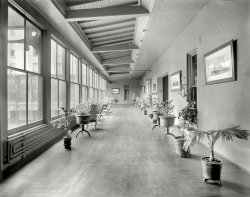
- A Boy and His Dog: 1900
- Continuing our visit to Grosse Ile, Michigan, circa 1900. "Rio Vista." 8x10 inch dry plate glass negative, Detroit ... Posted by Dave - 09/14/2011 - 5:33pm -
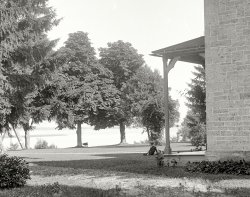
- The Sherman: 1899
- Mount Clemens, Michigan, circa 1899. "Sherman House." And its Sample Room. 8x10 inch glass ... Posted by Dave - 09/16/2018 - 5:38pm -
![The Sherman: 1899 Mount Clemens, Michigan, circa 1899. "Sherman House." And its Sample Room. 8x10 inch glass negative, Detroit Photographic Company. View full size.
119 Years LaterNorthwest corner of Cass and Gratiot where the Sherman House used to stand. Now a Macomb County office building housing, among other things, the offices of the Friend of the Court.
The Object across the streetWith the Round Globe and appears it would be colorful. Is It a fancy Barber Pole?
Streetcar tracks and---dirt roads, I didn't know they coexisted.
Stone TabletsThe stone tablets standing on edge in the gutters were to prevent the utility poles from being struck by wagon wheel hubs. Often you will also see many spirally wound wraps of steel wire around pole bases, or steel sheet, to similarly protect poles from damage. It must have been a real problem.
Obsolete CommunicationsTwo types of obsolete communication in this picture struck me. The paperboy and Western Union bike messengers.
What the heck would they be sampling?
[Booze. - Dave]
From the Encyclopedia of Chicago:
A second type of drinking place evolved from grocers and provisioners who began to sell hard liquor in wholesale quantities. At first, their sample rooms were places where customers could taste-test the stock; long afterward, "sample room" became simply another name for saloon.
(The Gallery, Bicycles, DPC, Streetcars)](https://www.shorpy.com/files/images/SHORPY-4a03997a.thumbnail.jpg)
- Silk Railroad: 1900
- ... Lehigh Valley predominate, with one from Lake Shore & Michigan Southern, another from Delaware & Hudson, and the light-colored ... Posted by Dave - 07/21/2017 - 10:53pm -
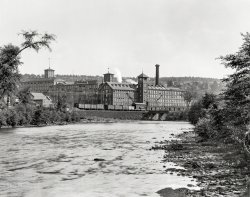
- A Hot Mess: 1901
- ... 1901. "Glazier Stove Company, brass foundry, Chelsea, Michigan." Our umpteenth look at these slightly untidy premises. 8x10 inch dry ... Posted by Dave - 09/23/2014 - 12:38pm -
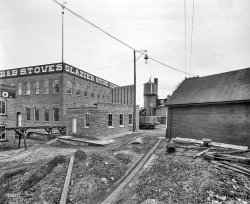
- Light Industry: 1941
- ... Revolution.
Having been raised in the Motor City (Detroit, Michigan), I am amazed to learn about the history and organized labor of an ... Posted by Dave - 11/15/2018 - 8:20pm -
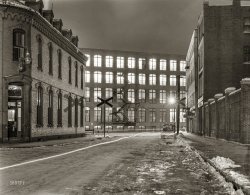
- Scenic Saginaw: 1908
- Saginaw, Michigan, circa 1908. "Hoyt Library." With a number of hazards for the unwary ... Posted by Dave - 03/27/2014 - 11:58am -
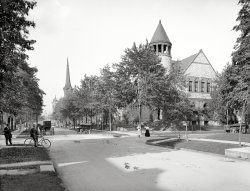
- Maumee Deepest: 1899
- ... for service between Sault Ste. Marie and Cheboygan, Michigan. Sold in November 1905 to a syndicate wishing to stem the influence of ... Posted by Dave - 11/07/2014 - 8:23pm -
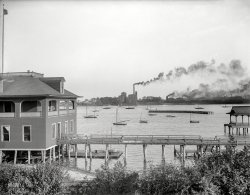
- Dead River: 1905
- Circa 1905. "Dead River sawmill, Marquette, Michigan." 8x10 inch dry plate glass negative, Detroit Photographic Company. ... Posted by Dave - 04/13/2018 - 5:34am -
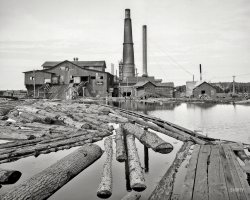
- All a Board: 1899
- ... to NE Minnesota, the northern half of Wisconsin, and Michigan's UP. River junction towns like Minneapolis, Stillwater, and Winona ... Posted by Dave - 05/09/2016 - 5:12pm -
